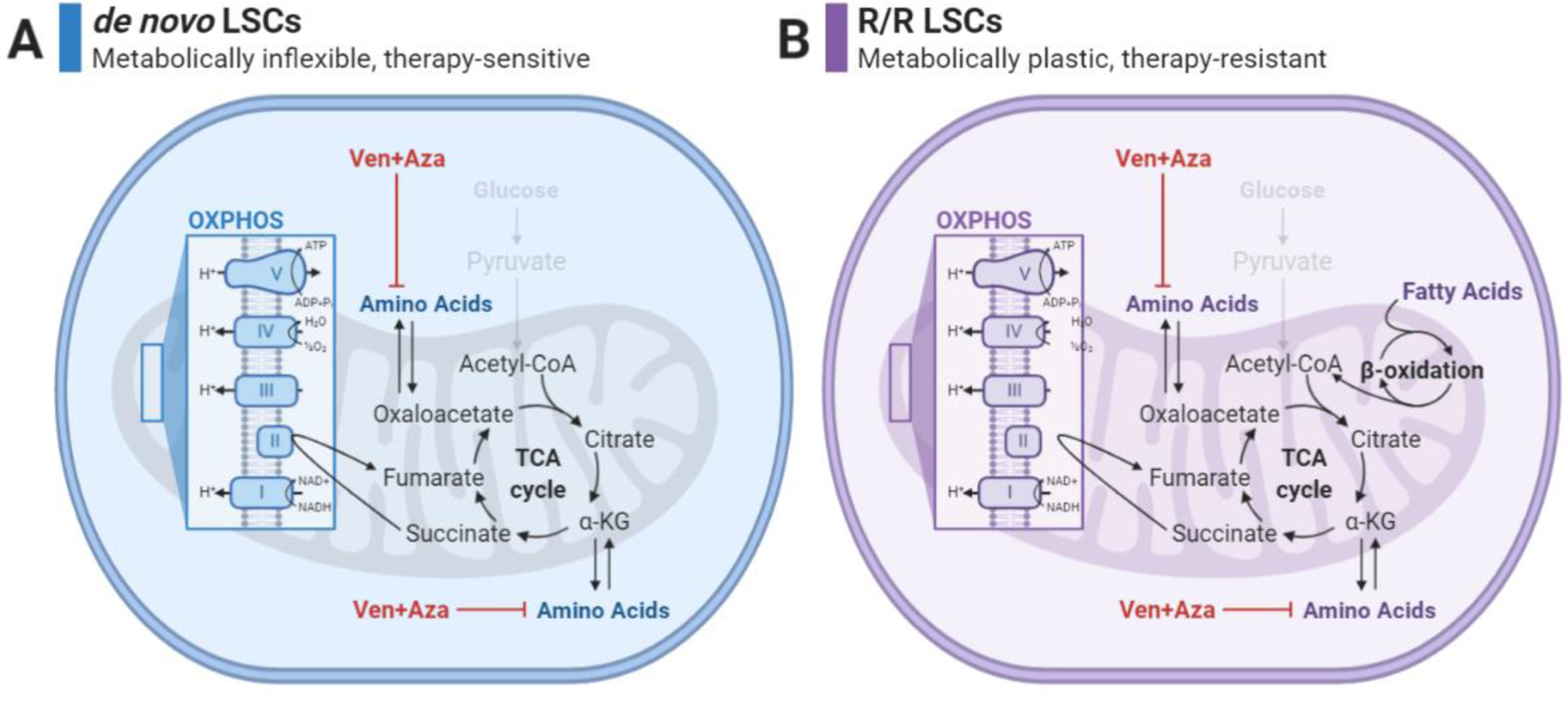Figure 3: Metabolic features of LSCs.

A) de novo LSCs are described as metabolically inflexible as they are unable to activate glycolysis and are uniquely reliant on OXPHOS for energy production. As a result, glucose can no longer be used as a fuel source for the TCA cycle and de novo LSCs are instead reliant on amino acids as a fuel source. Amino acids enter the TCA cycle through conversion to TCA cycle intermediates such as oxaloacetate and alpha-ketoglutarate. The combination of venetoclax and azacitidine (Ven+Aza) successfully inhibits amino acid import and metabolism as well as OXPHOS, allowing de novo LSCs to be eradicated.
B) Relapsed/refractory (R/R) LSCs are also unable to activate glycolysis and are also uniquely reliant on OXPHOS for energy production. While glucose is not available as a fuel source for the TCA cycle, R/R LSCs can use both amino acids and fatty acids to fuel the TCA cycle and OXPHOS. Fatty acids are converted to Acetyl-CoA through beta oxidation in the mitochondria. While Ven+Aza remains biologically active in these cells, the ability of R/R LSCs to use fatty acids as a fuel source allows for therapeutic resistance by compensating for the loss of amino acids. Created with BioRender.com.
